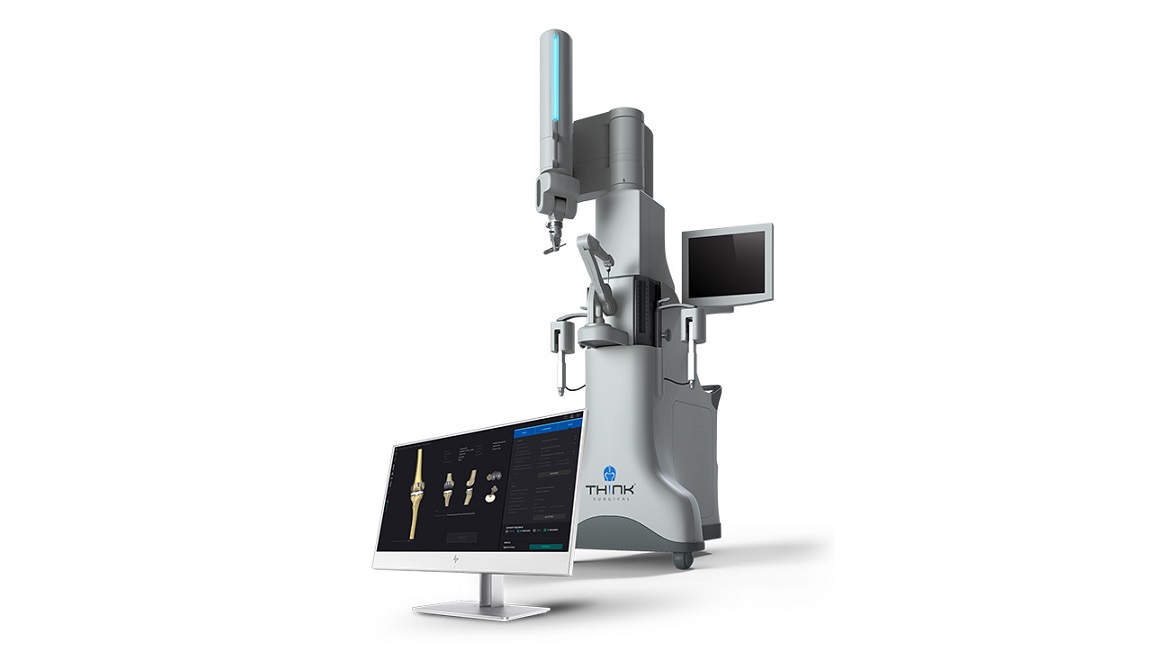October 21, 2022
NASHVILLE, Tenn.–(BUSINESS WIRE)–HCA Healthcare, Inc. (NYSE: HCA) today announced financial and operating results for the third quarter ended September 30, 2022.
Key third quarter metrics (all percentage changes compare 3Q 2022 to 3Q 2021 unless otherwise noted):
- Revenues totaled $14.971 billion
- Net income attributable to HCA Healthcare, Inc. totaled $1.134 billion, or $3.91 per diluted share
- Adjusted EBITDA totaled $2.902 billion
- Cash flows from operating activities totaled $3.020 billion
- Same facility admissions declined 1.5 percent while same facility equivalent admissions increased 2.3 percent
“Despite a difficult comparison to the prior year due to the COVID-19 Delta variant, we are pleased with our results and the execution of our teams in a challenging operating environment, which included tremendous efforts from our courageous frontline caregivers and support teams who worked tirelessly to provide uninterrupted care during Hurricane Ian,” said Sam Hazen, Chief Executive Officer of HCA Healthcare.
Revenues in the third quarter of 2022 totaled $14.971 billion, compared to $15.276 billion in the third quarter of 2021. Net income attributable to HCA Healthcare, Inc. totaled $1.134 billion, or $3.91 per diluted share, compared to $2.269 billion, or $7.00 per diluted share, in the third quarter of 2021. Results for the third quarter of 2022 include losses on sales of facilities of $3 million, or $0.02 per diluted share. Results for the third quarter of 2021 include gains on sales of facilities of $1.047 billion, or $2.43 per diluted share, related to the sale of four hospitals in Georgia and other health care entity investments. In September 2022, the state of Florida received approval from the Centers for Medicare and Medicaid Services for its directed payment program for the program year that began October 1, 2021 and ended September 30, 2022. Revenues for the third quarter of 2022 include approximately $266 million for the full program year. Other operating expenses include approximately $125 million from provider tax assessments related to the same period.
For the third quarter of 2022, Adjusted EBITDA totaled $2.902 billion, compared to $3.224 billion in the third quarter of 2021. Adjusted EBITDA is a non-GAAP financial measure. A table providing supplemental information on Adjusted EBITDA and reconciling net income attributable to HCA Healthcare, Inc. to Adjusted EBITDA is included in this release.
Results for the third quarter 2022 include Hurricane Ian’s impact, primarily on our Florida facilities, causing additional expenses and lost revenues estimated at $35 million. This amount is prior to any potential insurance recoveries.
Same facility admissions declined 1.5 percent while same facility equivalent admissions increased 2.3 percent in the third quarter of 2022, compared to the prior year period. Same facility emergency room visits declined 1.3 percent in the third quarter of 2022, compared to the prior year period. Same facility inpatient surgeries increased 5.6 percent, and same facility outpatient surgeries increased 2.0 percent in the third quarter of 2022, compared to the same period of 2021. Same facility revenue per equivalent admission declined 3.5 percent in the third quarter of 2022, compared to the third quarter of 2021. Year over year comparisons were impacted by significantly higher COVID-19 volumes in the prior year, when COVID-19 represented 12.7 percent of same-facility admissions versus 5.2 percent in the current year quarter.
Nine Months Ended September 30, 2022
Revenues for the nine months ended September 30, 2022 totaled $44.736 billion, compared to $43.688 billion in the same period of 2021. Net income attributable to HCA Healthcare, Inc. was $3.562 billion, or $11.97 per diluted share, for the nine months ended September 30, 2022 compared to $5.142 billion, or $15.43 per diluted share, for the first nine months of 2021. Results for the nine months ended September 30, 2022 include losses on sales of facilities of $25 million, or $0.09 per diluted share, and losses on retirement of debt of $78 million, or $0.20 per diluted share. Results for the nine months ended September 30, 2021 include gains on sales of facilities of $1.057 billion, or $2.39 per diluted share, and losses on retirement of debt of $12 million, or $0.03 per diluted share.
Balance Sheet and Cash Flows from Operations
As of September 30, 2022, HCA Healthcare, Inc.’s balance sheet reflected cash and cash equivalents of $999 million, total debt of $37.710 billion, and total assets of $51.484 billion. During the third quarter of 2022, capital expenditures totaled $1.131 billion, excluding acquisitions. Cash flows provided by operating activities in the third quarter of 2022 totaled $3.020 billion, compared to $2.277 billion in the third quarter of 2021.
During the third quarter of 2022, the Company repurchased 3.361 million shares of its common stock at a cost of $698 million. The Company had $3.106 billion remaining under its repurchase authorization as of September 30, 2022. As of September 30, 2022, the Company had $3.885 billion of availability under its credit facilities.
Dividend
HCA today announced that its Board of Directors declared a quarterly cash dividend of $0.56 per share on the Company’s common stock. The dividend will be paid on December 28, 2022 to stockholders of record at the close of business on December 14, 2022.
The declaration and payment of any future dividend will be subject to the discretion of the Board of Directors and will depend on a variety of factors, including the Company’s financial condition and results of operations and contractual restrictions. Future dividends are expected to be funded by cash balances and future cash flows from operations.
Earnings Conference Call
HCA Healthcare will host a conference call for investors at 8:00 a.m. Central Daylight Time today. All interested investors are invited to access a live audio broadcast of the call via webcast. The broadcast also will be available on a replay basis beginning this afternoon. The webcast can be accessed at: https://investor.hcahealthcare.com/events-and-presentations.
About the Company
As of September 30, 2022, HCA Healthcare operated 182 hospitals and approximately 2,300 ambulatory sites of care, including surgery centers, freestanding emergency rooms, urgent care centers and physician clinics, in 20 states and the United Kingdom.
Forward-Looking Statements
This press release contains forward-looking statements within the meaning of the federal securities laws, which involve risks and uncertainties. Forward-looking statements include statements that do not relate solely to historical or current facts. Forward-looking statements can be identified by the use of words like “may,” “believe,” “will,” “expect,” “project,” “estimate,” “anticipate,” “plan,” “initiative” or “continue.” These forward-looking statements are based on our current plans and expectations and are subject to a number of known and unknown uncertainties and risks, many of which are beyond our control, which could significantly affect current plans and expectations and our future financial position and results of operations. These factors include, but are not limited to, (1) developments related to COVID-19, including, without limitation, the length and severity of its impact and the spread of virus strains with new epidemiological characteristics; the volume of canceled or rescheduled procedures and the volume and acuity of COVID-19 patients cared for across our health systems; measures we are taking to respond to COVID-19; the impact and terms (including the termination or expiration) of government and administrative regulation and stimulus and relief measures (including the Families First Coronavirus Response Act, the Coronavirus Aid, Relief, and Economic Security (“CARES”) Act, the Paycheck Protection Program and Health Care Enhancement Act, the Consolidated Appropriations Act, 2021, the American Rescue Plan Act of 2021 (“ARPA”) and other enacted and potential future legislation) and whether various stimulus and relief programs continue or new similar programs are enacted in the future; changes in revenues due to declining patient volumes, changes in payer mix, deteriorating macroeconomic conditions (including increases in uninsured and underinsured patients) and capacity constraints; potential increased expenses related to inflation or labor, supply chain or other expenditures; supply shortages and disruptions; and the timing, availability and adoption of effective medical treatments and vaccines (including boosters), (2) the impact of our substantial indebtedness and the ability to refinance such indebtedness on acceptable terms, (3) the impact of current and future federal and state health reform initiatives and possible changes to other federal, state or local laws and regulations affecting the health care industry, including but not limited to, the Patient Protection and Affordable Care Act, as amended by the Health Care and Education Reconciliation Act of 2010 (collectively, the “Affordable Care Act”), and the effects of additional changes to the Affordable Care Act, its implementation, or interpretation (including through executive orders and court challenges), and proposals to expand coverage of federally-funded insurance programs as an alternative to private insurance or establish a single-payer system (such reforms often referred to as “Medicare for All”), and also including any such laws or governmental regulations which are adopted in response to COVID-19, (4) the effects related to the implementation of sequestration spending reductions required under the Budget Control Act of 2011, related legislation extending these reductions and those required under the Pay-As-You-Go Act of 2010 (“PAYGO Act”) as a result of the federal budget deficit impact of the ARPA, and the potential for future deficit reduction legislation that may alter these spending reductions, which include cuts to Medicare payments, or create additional spending reductions, (5) increases in the amount and risk of collectability of uninsured accounts and deductibles and copayment amounts for insured accounts, (6) the ability to achieve operating and financial targets, and attain expected levels of patient volumes and control the costs of providing services, (7) possible changes in Medicare, Medicaid and other state programs, including Medicaid supplemental payment programs or Medicaid waiver programs, that may impact reimbursements to health care providers and insurers and the size of the uninsured or underinsured population, (8) increases in wages and the ability to attract, utilize and retain qualified management and other personnel, including affiliated physicians, nurses and medical and technical support personnel, and workforce disruptions, (9) the highly competitive nature of the health care business, (10) changes in service mix, revenue mix and surgical volumes, including potential declines in the population covered under third-party payer agreements, the ability to enter into and renew third-party payer provider agreements on acceptable terms and the impact of consumer-driven health plans and physician utilization trends and practices, (11) the efforts of health insurers, health care providers, large employer groups and others to contain health care costs, (12) the outcome of our continuing efforts to monitor, maintain and comply with appropriate laws, regulations, policies and procedures, (13) the availability and terms of capital to fund the expansion of our business and improvements to our existing facilities, (14) changes in accounting practices, (15) changes in general economic conditions nationally and regionally in our markets, including inflation and economic and business conditions (and the impact thereof on the economy and financial markets) resulting from COVID-19 or other factors, (16) the emergence of and effects related to pandemics, epidemics and infectious diseases, (17) future divestitures which may result in charges and possible impairments of long-lived assets, (18) changes in business strategy or development plans, (19) delays in receiving payments for services provided, (20) the outcome of pending and any future tax audits, disputes and litigation associated with our tax positions, (21) potential adverse impact of known and unknown government investigations, litigation and other claims that may be made against us, (22) the impact of potential cybersecurity incidents or security breaches, (23) our ongoing ability to demonstrate meaningful use of certified electronic health record (“EHR”) technology and the impact of interoperability requirements, (24) the impact of natural disasters, such as hurricanes and floods, physical risks from climate change or similar events beyond our control, (25) changes in U.S. federal, state, or foreign tax laws including interpretive guidance that may be issued by taxing authorities or other standard setting bodies, and (26) other risk factors described in our annual report on Form 10-K for the year ended December 31, 2021 and our other filings with the Securities and Exchange Commission. Many of the factors that will determine our future results are beyond our ability to control or predict. In light of the significant uncertainties inherent in the forward-looking statements contained herein, readers should not place undue reliance on forward-looking statements, which reflect management’s views only as of the date hereof. We undertake no obligation to revise or update any forward-looking statements, or to make any other forward-looking statements, whether as a result of new information, future events or otherwise. All references to “Company” and “HCA Healthcare” as used throughout this release refer to HCA Healthcare, Inc. and its affiliates.








